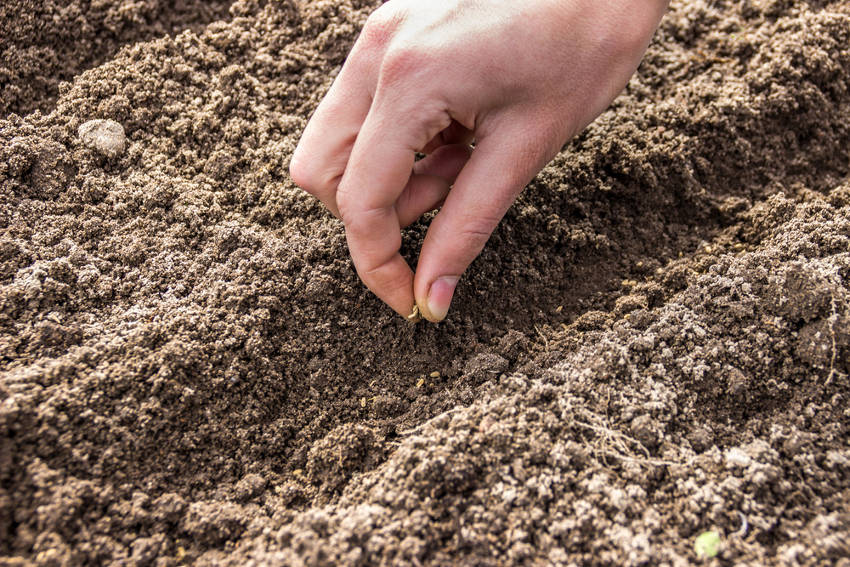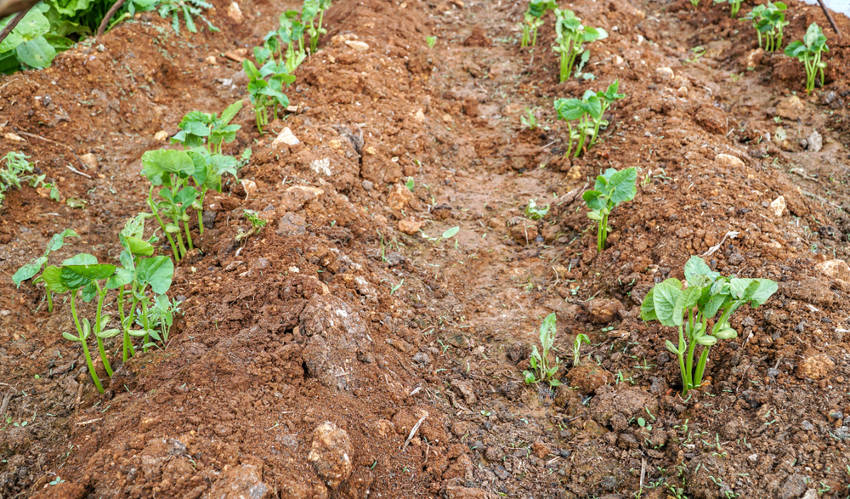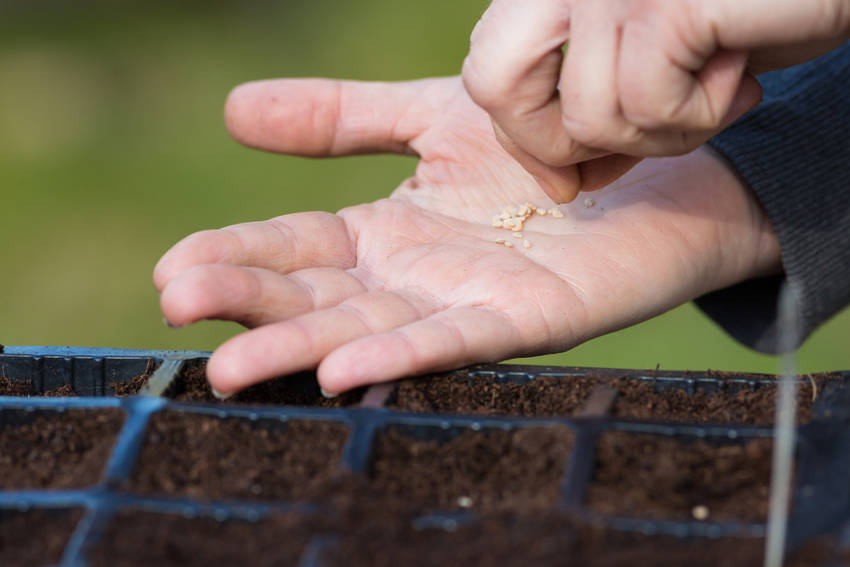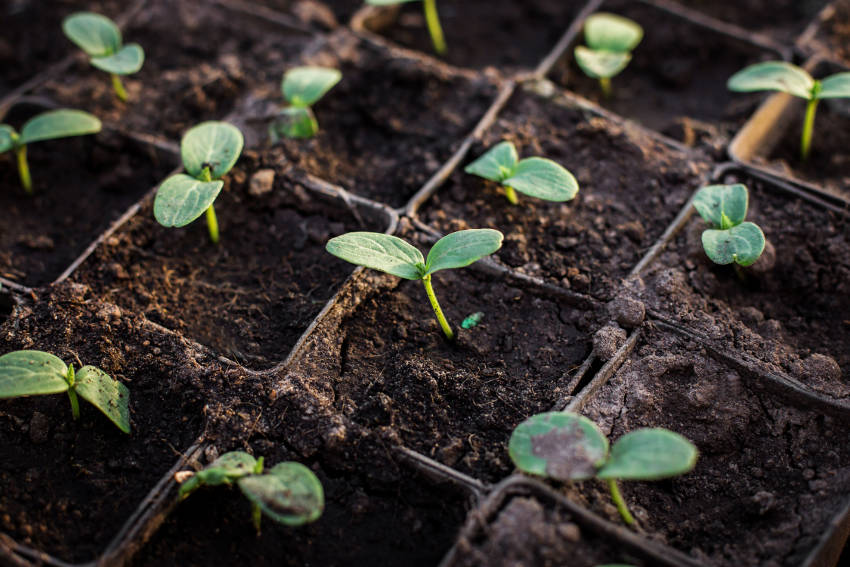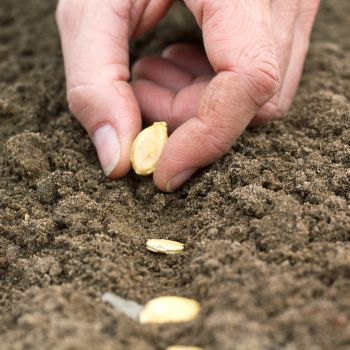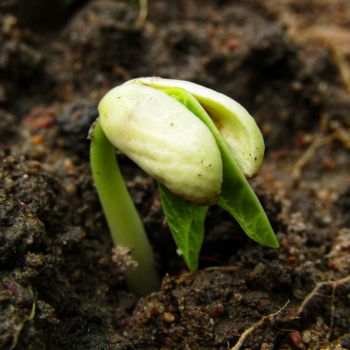Every gardener knows that feeling of excitement as spring arrives and it's time to start growing this season's plants. Armed with seed packets of your favourite varieties, the temptation is always to jump straight in, but there are a few decisions you need to make if you want to enjoy the most success over the growing season.
The first and most important choice is which sowing method you'll use for each type of seed. You could sow them directly into the open soil, growing them in one spot throughout their lives, or alternatively sow into containers, raising seedlings for transplanting later to their final home.
Choosing which method to use is partly down to the type of seed you're using, partly the facilities and space you have available, and also partly just personal preference.
Direct Sowing of Seeds
Direct sowing is the most straightforward method, and has several advantages.
- It protects fragile root systems, and avoids the disturbance of transplanting.
- It's better for growing root vegetables and other crops which react badly to their tap roots being constrained.
- No hardening off is required, as the plants will grow in their final location and conditions from the start.
- No special equipment is needed, just a suitable patch of earth.
The downside is that you're very reliant on the weather to provide good growing conditions - a cold snap or torrential downpour can decimate emerging plants in no time. Also, pests such as slugs, snails, and birds tend to be more of a problem outdoors, finding tender new shoots impossible to resist.
Raising Seedlings in Containers
Raising seedlings in containers takes a little more effort and skill, but provides several benefits over direct sowing.
- Starting seedlings off indoors or under glass extends the growing season in cooler climates.
- Raising seedlings gives you far more control over the growing environment, from soil type to watering regimen.
- It's usually easier to protect against pests compared to direct sowing.
- Raising seedlings for later transplantation makes better use of limited space, allowing the same outdoor patch to grow successive harvests.
However, raising seedlings isn't without its problems. Some plants with delicate root systems react badly to being first constrained and then transplanted.
Watering can also be more complicated in containers - an unexpectedly hot day can quickly parch the compost and kill the seedling.
Lastly, for raising seedlings you'll need more equipment, including containers, compost, and often some type of protective cover.
Sunlight and Shade
Whether you're starting your seeds off directly in the soil or in containers, you'll need to choose their final position carefully. Different plants require different amounts of sunlight to flourish. Trying to grow a sun-loving plant in a shady spot is a recipe for disappointment, while planting natural shade dwellers in full sun is a waste of prime growing space.
And remember that the amount of sunlight a particular position gets will change throughout the day and over the season. Take a little time to observe how the light behaves in your own location before deciding where to plant.
Plant Life Cycles
Also, the life cycle of your plants will affect their ideal positioning. Plant species come in three main growing types. Annual plants grow throughout a single season before dying off, biennial plants complete a cycle over two seasons, while perennial plants last for three or more.
Take this into consideration when choosing your seeds' final home - there's little point in placing a tender biennial in a spot prone to winter frost, for example, but this wouldn't matter for an annual or a hardy perennial.
Lastly, it's a sensible idea to group seeds from each cycle-type together, to minimise the disruption of digging out dead annuals which are still surrounded by living biennials or perennials.
Once you've chosen your seeds, sowing method, and final location, you can get to work. Here are the step-by-step instructions for both direct sowing and raising seedlings.
Method for Direct Sowing:
- Prepare the ground well, by removing weeds and debris, and breaking up larger clumps of soil. Water moderately, but don't soak, and optionally dig in some well-rotted compost or manure.
- Sow seeds at the depth and spacing recommended on the packet. Smaller seeds can be spaced more closely, then thinned out later to leave the strongest plants at the optimum distance. Larger seeds such as legumes should be spaced straight into their final patterns.
- Water the seeds in, but don't drench them: over-wet soil risks the seeds rotting before germination. Continue to water regularly according to weather conditions, aiming for a moist but not waterlogged soil at all times.
- Depending on your location, slugs, snails, birds, and other pests may be a problem, so take whatever protective measures you can.
- Keep the soil weed-free throughout the growing season, adding further compost or plant feed as necessary.
Method for Raising Seedlings:
- Collect together your pots or other containers, and wash them well. Choose sizes appropriate to the seeds, using the spacing instructions on the seed packet as a rough guide. Try to keep root restriction to a minimum, but there's no need to dedicate a large pot to each seed - you'll be transplanting them well before they grow to maturity.
- Fill your containers with good-quality seed compost or other fine-grained soil, leaving a centimetre or two clear at the top for easy watering.
- Plant the seeds to the depth specified on the packet, and cover well. Consider using a thin top layer of vermiculite or seed-raising mix to help germination and protect the emerging seedlings.
- Water the containers moderately, and place them in their starting growing position. Avoid direct sunlight, especially under glass, as this can scorch young, tender seedlings as well as drying the soil out surprisingly quickly.
- Keep the compost moist at all times. Remember, containers can dry out very quickly and be difficult to properly moisten again, so keep on top of this chore.
- Once the seedlings have germinated and are nearing their transplanting height, start to introduce them to their final planting conditions by moving the containers outside for a few hours a day to harden them off.
- When transplanting the seedlings to their final area, make sure the soil is finely raked and weed-free. Take care when transplanting to minimise root disturbance and stem damage. Also pay attention to the weather - plan to avoid extremes of any kind for the first few days after planting if possible.
- Continue weeding, watering, feeding, and pest control until the plants are mature.
Choosing When to Sow
Whichever method you're using to sow, it's important to choose the right time to achieve the best results. The seed packet will give a good indication of typical timings, which you should adapt for your own climate. However, there are a few things to bear in mind:
- Different seeds take longer or shorter times to grow, and some seeds may not be a good fit for the length of your area's seasons. Raising seedlings under cover can extend the growing season, but be careful of early and late season frosts even under glass. Realistically, try and match the needed growing time with your local climate.
- Sowing too early indoors can lead to 'leggy' seedlings if it stays too cold to transplant them outside. Don't be in too much of a hurry to get sowing - seeds planted a little late will soon catch up when summer arrives, whereas leggy plants rarely flourish later.
- For food crops which grow quickly, it makes sense to plant your seeds in succession. Rather than sowing a whole packet at once and then facing a glut, sow a smaller amount of seed every week or two, so that growth and cropping is staggered throughout the season.
Growing your own plants from seed is an exciting and satisfying journey, but many small details can make the difference to your success. Planning is vital - before sowing, decide on how to give your seedlings the best start in life, and you'll be rewarded with healthy, abundant results.
